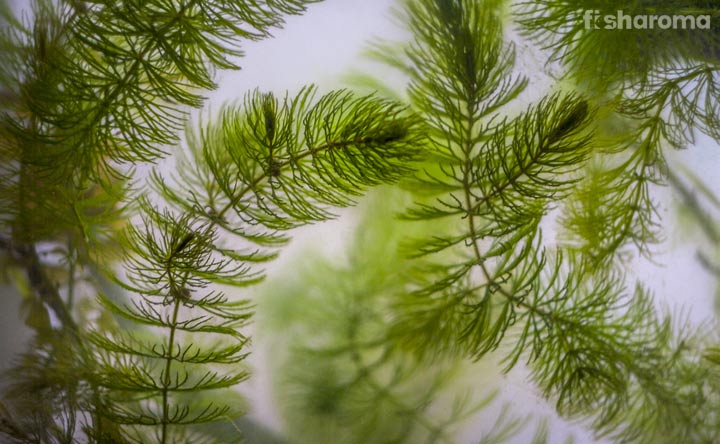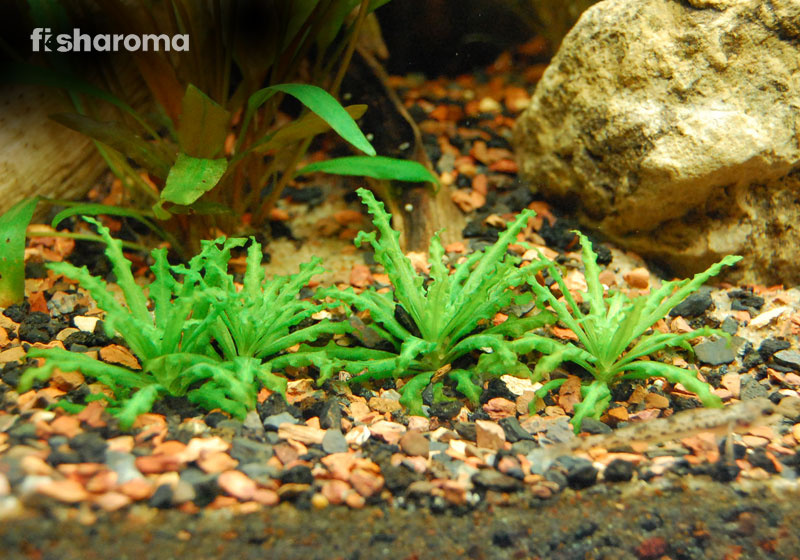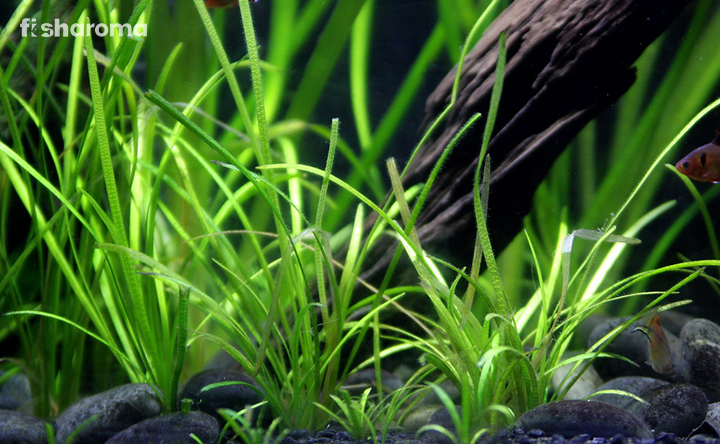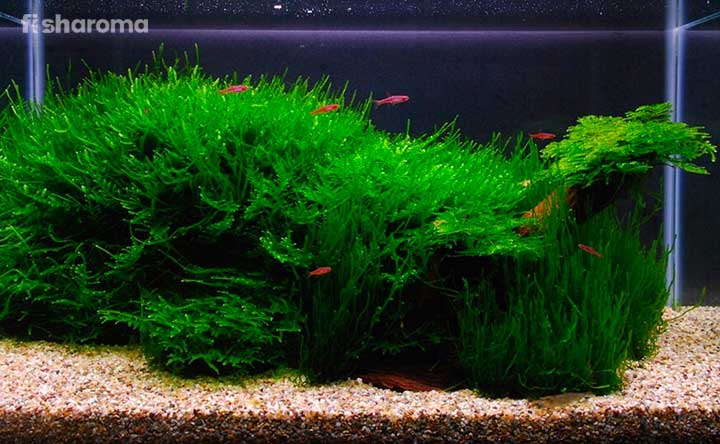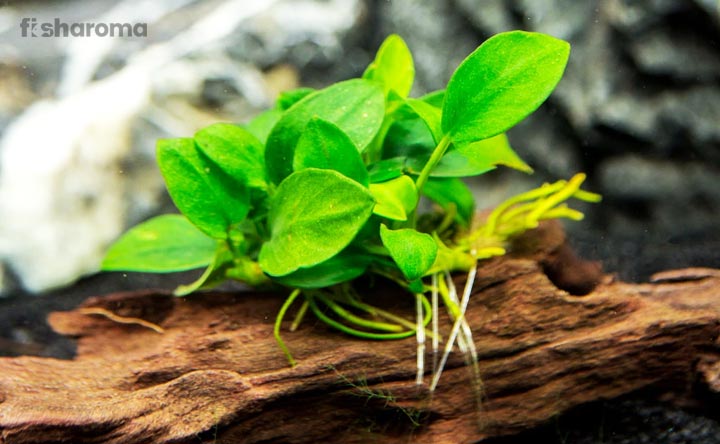20+ Tried & Tested Low Light Aquarium Plants for Your Freshwater Tank
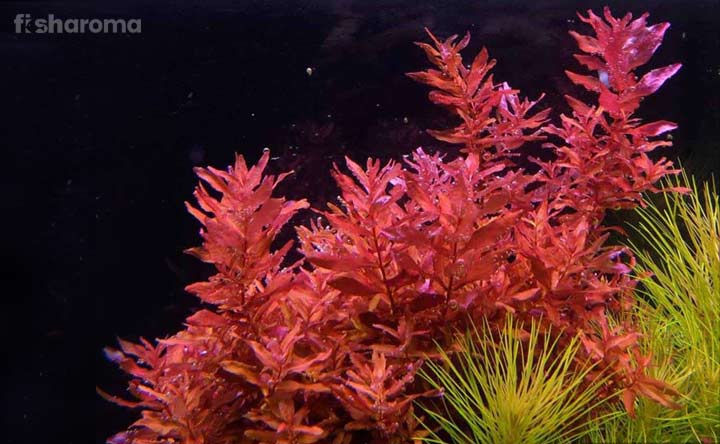
- Care Package for Low Light Aquarium Plants
- 20 Low Light Aquarium Plants for Beginners
- Java Fern
- Java Moss
- Hornwort
- Moneywort
- Anubias barteri
- Dwarf Rotala
- Rotala indica
- Parrot’s Feather
- Marimo Moss Balls
- Lemon Bacopa
- Waterwheel Plant
- Cryptocoryne spiralis
- Cryptocoryne wendtii
- Cryptocoryne balansae
- African Water Fern
- Floating Fern
- Creeping Primrose-Willow
- Marsh Seedbox
- Pelia
- Brazilian Pennywort
- Summary
Planted tanks have a soothing appeal that invariably draws us to them. The greenery (in most cases) that they bring on to in a tank not only makes the captive environment looks natural but they also have beneficial effects on the ecological system of your aquarium. However, maintaining them is no easy feat; which is why the demand for low light aquarium plants is on the rise. These plants, while providing most, if not all of the features of an aquatic plant, require minimum effort from your end. So, allow us to introduce you to these amazing floras for your aquarium.
Care Package for Low Light Aquarium Plants
Although low light aquarium plants are easy to grow and have minimalistic lighting requirements as evident from their name, they do need some supplementary elements to counteract the lack of light. These items are collectively referred to as the care package for low light aquarium plants. They are as follows:
Liquid Fertilizer
Liquid fertilizers, such as the Seachem Flourish Freshwater Plant Supplement, make up for the supply of nutrients that is otherwise absent in a captive environment. Their need is felt even more among floating plants since they are not rooted in the substrate, which is the main source of nutrients.
CO2 Supply
If your planted tank is heavily stocked, you need to provide a CO2 (Carbon-Dioxide) supply system to them. The Seachem Flourish Excel Bioavailable Carbon helps produce longer chain carbon compounds without the requirement of any extensive setups. In a low light setting, they play a significant role in the photosynthesis process.
Root Tabs
Root tabs refer to the nutrient-rich discs that are placed below the substrate to meet the requirements of nutrients for low light plants. Rich in calcium, magnesium, potassium, iron, biotin, among others, the Seachem Flourish Tabs Growth Supplement provides fertilization to the root zone of aquatic plants and is a must for your planted tank.
20 Low Light Aquarium Plants for Beginners
If you think that going for low light aquarium plants will limit your choice, then you are highly mistaken. The variety in shapes, sizes, color, and overall appearance that these plants have between each other is beyond our imagination. We are certain that there is one for each one of your tastes and preferences. So, here’s presenting 20 beginner-friendly low light aquarium plants for you.
Java Fern

One of the most versatile aquatic plants that you can host in your aquarium, Java Ferns (Microsorum pteropus) can reach a height of 12-14” (30-35 cm) and width of 6” (15 cm). This low light aquarium plant is slow in its growth rate initially but soon spreads across the entire aquarium.
You can both anchor it to the substrate of your tank or let it float on the water surface. It should not be exposed to harsh lighting under any circumstance since that would darken the leaves. In a low light situation, its leaves will achieve a bright green color and will spread out evenly from its base.
Your aquatic pets can use it as their sleeping quarter since it creates the illusion of a grass field. Its leaves are generally long and thin, which helps in beautifying the tank.
Java Moss

Famous for its tiny oval-shaped leaves, Java Moss (Taxiphyllum barbieri) is a tropical aquatic plant that doesn’t have any roots, which means, it gains all its nutrients from the water itself. It can be grown as a lawn or in small patches across the entire substrate of your aquarium.
A great aspect of this plant is that its compatibility since it can survive in tough conditions, meaning, even when most of its required parameters are not met, it can still survive. Besides, most freshwater fish can survive amicably with Java Moss as well.
Although this hardy plant is attached to the driftwood, substrate, or rocks of your tank, it takes its nutrients from the water column through its leaves since it is a column-feeding plant.
Hornwort

An extremely fast-growing aquatic plant that can reach an astonishing height of 10 ft, Hornworts (Anthocerotophyta) are suited for large tanks. They are hardy by nature and even a single plant can give rise to multiple stems that can help in filling the landscape of your tank.
Since its leaves grow outwards in multiple shoots, it looks like a bushy tail. In addition, it doesn’t even require a solid substrate as it doesn’t have any roots. It usually is either seen floating on the water surface or attaching itself to various aquarium objects.
However, despite it being compatible with newborn fish, it doesn’t have great chemistry with most other aquatic plants; to the point that its presence may even kill other aquatic plants. This is because it releases a certain sort of chemical which inhibits the growth of other plants.
Moneywort

If a creeping plant is what you are looking for, then you need to settle down for Moneywort (Lysimachia nummularia). Known for adding a vibrant color to your mundane tank, it has tiny, oblong leaves that grow upwards along its hardy stalks.
Their growth is vertical and they can reach a height of 6-8” (15-20 cm). Recommended for small tanks, this low light aquarium plant get its dosage of nutrient directly from the water column.
The beauty of this plant is that it does well in every lighting condition. As long as you trim it from time to time, it will continue to elevate the aesthetics of your aquarium. It is also known as Creeping Jenny, Herb Twopence, and Twopenny Grass.
Anubias barteri

Highly adaptive by nature, Anubias barteri have leathery, heart-shaped leaves that have rippled edges to them. Despite its slow growth rate, this low light aquarium plant quite tough and can survive varied water conditions.
Propagating this low light aquarium plant is also extremely easy since it grows perfectly from cuttings. You can attach it to driftwood, rocks, or the substrate of your tank or simply let it float.
It can grow to a size of 16” (40 cm). To control it from spreading wildly, all you need to do is to regularly trim it at the back of the leaves near the rhizomes. Those of you interested in foreground or background landscaping can definitely opt for this plant.
Dwarf Rotala

If you are looking for a splash of color other than green in your aquarium, then none can match the beauty of Dwarf Rotala (Rotala rotundifolia). With its pink coloration, rounded narrow leaves that cascade downwards, this low light aquarium plant is truly a work of art.
Although they don’t grow more than 6” (15 cm) in width, they can vertically keep on growing to uncontrollable lengths if proper trimming is not done from time to time.
This column-feeding plant can do well in low to moderate lighting condition if it is clubbed with nitrate limitation. It is advised to place it in the middle or back portion of your tank. Its compatibility with other freshwater fish also adds to its appeal. Another major benefit of this plant is that it helps in balancing and regulating the condition of a newly cycled tank.
Rotala indica

Rotala indica is very much similar to Dwarf Rotala (Rotala rotundifolia) with the only differences being that in case of indica, the leaves are more rounded and are green in color with a reddish hue on their stem.
This column-feeding plant is relatively fragile than the others on this list and requires heavy pruning. You need to provide a firm substrate for it to root its anchor into and a water temperature of around 80° F (26° C). You also need to ensure that there are no Cichlids in their tank since they may severe its root system.
Now although this may survive in a low light condition, it will only grow into a thick bush when there’s additional lighting.
Parrot’s Feather

Another uniquely-shaped low light aquarium plant that is bound to catch the attention of anyone who lays their eyes on your aquarium, the Parrot’s Feather (Myriophyllum aquaticum) is a perennial plant that is ideal for aquatic pets that spend a considerable amount of time hiding.
It derives its name from its feather-like leaves that sprout from its stems in whorls of 4-6. Although they are not very demanding of the temperature of the water they grow in, you need to provide high amount of fertilizer into the substrate of your tank (owing to their rooting-feeding nature) to satiate their need.
The only concern is its wild growth since it can block the filters and pipes of your tank if you don’t maintain it on a regular basis. Nonetheless, its dense foliage makes it an attractive tankmate in your aquarium.
Marimo Moss Ball

Continuing our thread of distinctive aquatic plants, next on our list is the Marimo Moss Ball (Aegagropila linnaei). Shaped like a baseball, they are technically a type of algae rather than a plant. Often used as part of décor, these strains of spherical algae radially grow outwards, forming themselves in the shape of a ball.
You don’t have to worry about anchoring them down to the substrate or making them float on the water surface. Just drop in your tank and watch them settle down at the bottom of your aquarium. These column-feeders suck up nitrate from your tank and releases oxygen back, thereby keeping the environment healthy for your other plants and pets.
In addition, they serve as resting spots for your small fish as well. You don’t have to give any additional effort into trimming or maintaining them and they can survive extreme changes in their surroundings. They even can survive in saltwater sometimes.
Lemon Bacopa

One look at the Lemon Bacopa (Bacopa caroliniana) and you know why it is recommended for bursting your stress. Its smooth texture along with its subdued yellowish-green color can provide the much-needed relief to you when you stare at them after a day’s long work.
It is marked by its adorable-looking oblong leaves that grow opposite to each other, creating a “ladder” effect as it moves upwards on the stalks. This low light aquarium plant can even survive in high or moderate light settings.
Don’t be discouraged of the slow growth of this column-feeding beauty since it can reach a height of up to 12” (30 cm). Keep them evenly spread in order to avoid any dense clumps. It is also known as Water Hyssop and Giant Red Bacopa.
Waterwheel Plant

The Waterwheel Plant (Aldrovanda vesiculosa) is significantly different from most other plants for more reasons than one. First of all, it is an exotic plant, which many aquarists exclusively prefer. Secondly, it is shaped like a merry-go-round. Thirdly and most surprisingly, it is a carnivore plant.
It has been compared with the Venus Fly Trap due to its carnivore nature. The leaves of this plant function as the trap that grows in whorls of 5-9 in close succession around its central stem.
It is not depended on photosynthesis, which speaks volumes about it being a carnivore species in a low light setting. However, let us assure you that it won’t eat up your fish as long as they are not extremely tiny. They usually feed on microorganisms and plankton. It consumes nutrients from the water column. This free-floating plant needs to fed zooplankton regularly if you are planning to host it.
Cryptocoryne spiralis

Next up on our list of low light aquarium plants is the Cryptocoryne spiralis which is marked by its distinct narrow, long leaves that resemble grasses, with each of them reaching upwards.
A fascinating fact about this plant is that in the wild, it is known to store nutrients in its underground rhizomes during the dry season. At this stage, it survives by becoming dormant and losing all its leaves. In the next season, new rhizomes sprout new leaves when the rains come in.
When in captivity, you need to provide an iron-rich substrate to it in the form of fertilizers. Growing up to a height of 16” (40 cm), it is intolerant of stark changes in its water temperature. The optimal temperature range for it is 75-82° F (23-27° C).
Cryptocoryne wendtii

A highly variable low light aquarium plant that is known for exhibiting green, red, and brown leaves of varied sizes and textures, Cryptocoryne wendtii is always in demand among aquarists.
This plant doesn’t adapt quickly to new conditions. So, chances are there that you might find it dying off in the initial few days. But don’t worry! It will bounce back on its own in a week or so. As long as you provide a high grain size substrate to this root-feeding plant, it will grow healthily.
Its leaves grow upwards and can reach a length of up to 15” (38 cm). You can use this plant as a focal point in your aquarium. Remember, it thrives when it is planted alone instead of being planted with a group of other plants.
Cryptocoryne balansae

There is something about the wavy patterns in which the broad, fingered leaves of Cryptocoryne balansae moves in an aquarium that makes them soothing and calming to watch.
However, we should tell you that this plant prefers high lighting, but can survive in a low light condition as well. The only difference that you will notice when you are keeping it in a low light situation is that it will not form its special distinguishable ridges on its leaves.
You need to ensure that there is a high concentration of phosphorus and nitrogen in your tank. This slow-growing plant can grow up to 3 ft long; as such regular trimming is a must for them. This root-feeding plant species forms dense clumps in your tank, thereby serving as excellent hiding spots for your aquatic pets.
African Water Fern

Next up on our list of low light aquarium plants is the African Water Fern (Bolbitis heudelotii), known for its robust nature and delicate dark green leaves. It long stalks serve as natural décor for your tank.
This plant, although slow in its growth rate, can grow up to 16-18” (40-45 cm). It attaches itself to the rocks, barks, or the substrate of your aquarium and naturally tethers itself. Ideal for medium to large tanks, it prefers slightly warmer freshwater than most of its contemporaries.
Avoid keeping it with a Koi, Cichlid, or a Goldfish. If possible, provide a filter that generates current in your tank since it thrives in flowing water. Propagation is also relatively easy since it is basically through cuttings and divisions of the rhizomes.
Floating Fern

Evident by its name, Floating Fern (Salvinia natans) floats on the surface of the water and creates a beautiful cover for your tank. In other words, it acts as an excellent shade for your aquatic pets. Besides, it also makes the captive environment of your tank resemble the natural habitat. However, it may hinder the photosynthesis of other aquatic plants by blocking too much light.
It is characterized by its two tiny leaves that lay flat against the water surface with the third submerged leaf functioning as the root. It stays afloat with the help of the pouches of air within its leaves.
When you find it growing in abundance, you can simply take away some stems from the water. Its less-demanding nature makes it extremely beginner-friendly. It is also known as Floating Moss, Water Butterfly Wings, and Floating Watermoss.
Creeping Primrose-Willow

Creeping Primrose-Willow (Ludwigia repens) is highly in demand for its distinct red foliage. Fast in its growth rate, it requires regular trimming if you want it to maintain the shape of this stem plant.
It is usually planted in a large group of shoots and is placed in the foreground of your aquarium for elevating the aesthetics of your tank. We advise you to use iron-rich fertilizers on the substrate for this root-feeding plant.
It is also very hardy when it comes to variation in their water temperature, being able to live in both warm (75° F/ 23° C) and in cool (59° F/ 15° C) water. Ideal for medium to large tanks, the stems of this plant grow up to 20” (50 cm).
Marsh Seedbox

With its vivid green, red, and purple leaves, the Marsh Seedbox (Ludwigia palustris) is one of the very few low light aquarium plants that bear fruits. Probably, the best feature of this plant is that despite its fancy appearance, it is extremely easy to maintain.
Growing in an upright position, it has the potential to create a small dense forest inside your little aquarium. Its heavily-shaded leaves make up for great hiding spots for your aquatic pets. It is also known as Hampshire-Purslane and Water Purslane.
The leaves of this plant are arranged opposite to one another and on the axis of their leaves, flowers occasionally blossom. So, if that’s not enticing enough for you to buy, we don’t know what is?
Pelia

A great source of forming underwater hedges, Pelia (Monosolenium tenerum) spreads like a cushion at the bottom of your tank.
Since it is soft to touch, it is ideal for pets that have brittle fins. Having said that, it is brittle in itself, which means, you should be careful while handling it. It requires a nutrient-rich substrate and rocks to hold it down. After a couple of weeks, it will anchor itself firmly to the substrate. You can use cotton, nylon, or soft fishing line or net to anchor this column-feeding plant to the substrate.
It may visually be similar to moss, but unlike a moss, it doesn’t attach itself to structures. You can either let them float on the water surface or anchor them down to the substrate, based on your décor preference. The unique structure of its shoots makes it a great choice for aquascaping.
Brazilian Pennywort

Growing much like a creeping vine, the leaves of a Brazilian Pennywort (Hydrocotyle leucocephala) are of the size of a penny, and are bean-shaped and light green in color. It is often used as a decorative plant in aquariums.
Although it prefers and thrives in high lighting conditions with warm water, it can survive low light settings as well with cool water. We suggest that if you can’t provide high lighting conditions, then at least provide warm water to them. This column-feeding plant can be both rooted in the substrate and made to be float on the water surface.
It makes for a spectacular view in your tank, but you should pay close attention to whether it is choking other plants and aquatic animals in your tank or not. Also, don’t forget to trim this fast-growing plant from time to time.
Summary
In this fast-pacing world, most of us can’t commit to a planted tank since it requires heavy maintenance. However, with the aforementioned low light aquarium plants, you don’t have to invest a lot of your time and effort into taking care of them. As long as you trim them every now and then, and replace 10-20% of the tank water on a weekly basis, you are good to go. Also, don’t forget to check on whether your aquatic pet is compatible with your preferred aquatic plant or not before making the purchase. With this guide, we certainly hope that you will be able to enjoy a planted aquarium without any high-end effort.
Sneak Peek into the Care Guides of Aquatic Plants
If you have reached this stage of the article, we are certain that you are a lover of aquatic plants.
- Hornwort: One of the fastest-growing aquatic plants out there, Hornworts helps in achieving that naturalistic look in your aquarium. Find out the factors you need to keep in mind while growing this beautiful species in your aquarium.
- Dwarf Hairgrass: If you are looking for a carpet-like appearance in your tank, then Dwarf Hairgrass is what you need. Take a look at its care guide to achieve this spectacular look in your tank.
- Water Wisteria: Undemanding, hassle-free, ad sturdy, Water Wisterias are a delight for any aquarists. Learn how to grow them healthily with the help of our care guide.


